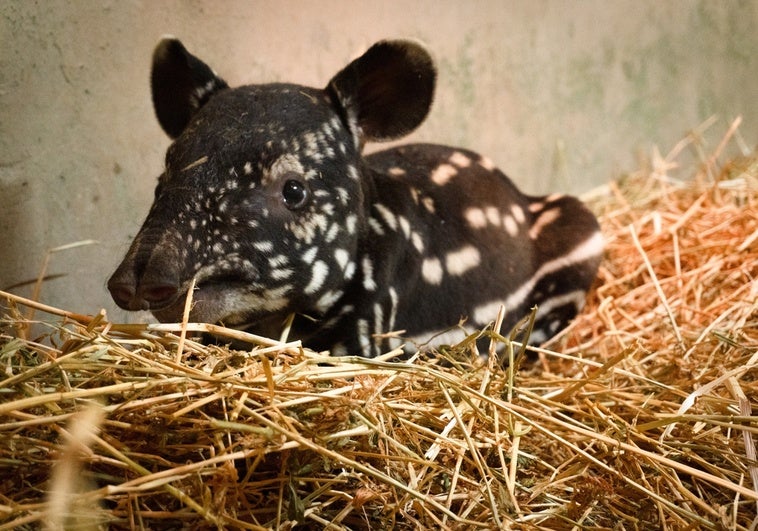
Sections
Highlight
Sections
Highlight

Bioparc Fuengirola has marked a milestone in international species conservation programmes with the birth of a Malayan tapir. The happy occasion took place in the early hours of 29 March, after thirteen months of gestation. Mother Rawa and her baby, which is yet to be named, appear healthy.
The Malayan tapir is a species in danger of extinction. Its population does not exceed 2,500 specimens worldwide, with only 25 births documented in zoos over the last decade. The birth in Fuengirola is, therefore, a major event in the protection of species.
More than a year ago, the arrival of Mekong, a young male, brought new hope for the reproduction of the Malayan tapir at Bioparc Fuengirola. His adaptation to his new environment and his bond with Rawa soon showed positive signs. The pair understood each other from the very first moment.
However, the birth of the calf took longer than expected. The gestation period for Malayan tapirs in captive gestations is around 13 months: 390 to 410 days, although this pregnancy lasted 424 days. The good thing is that Rawa allowed specialists to perform ultrasound scans until the days before the birth, which assured keepers of the positive prognosis.
The park has recorded unpublished images of the birth, documenting how Rawa brought her calf into the world and began to care for it from the very first moment. The images show the strength and tenderness of this natural process, highlighting the beauty of one of the most unknown and endangered species on the planet. The calf, the sex of which is yet to be determined, has been adapting to its environment and responding to the mother's stimuli.
Like all Malayan tapirs, the its fur has a pattern of white spots and stripes on a dark brown background - a camouflage strategy that allows it to blend in with the vegetation. As it grows, its appearance will gradually change to the characteristic black-and-white colouration of adults.
"Both the calf and the mother are doing well. From the very first moment, the calf has been able to locate its mother's breast to feed - a key gesture that confirms everything is going well. At the moment, the entire technical team is monitoring the calf's evolution. The baby is gaining weight and agility in following its mother; it responds to her caresses and continues to suckle. The next step, if everything progresses naturally, will be its move to the outside," said Bioparc Fuengirola's head of zoology Javier Vicent.
For the time being, both mother and calf will remain in the park's indoor facilities where they will undergo a period of quarantine to ensure their health and proper development. Steadily and as the calf grows, the team will move it outdoors, where they will observe its response to the new environment and adjust according to its needs.
Publicidad
Publicidad
Publicidad
Publicidad
Esta funcionalidad es exclusiva para registrados.
Reporta un error en esta noticia

Debido a un error no hemos podido dar de alta tu suscripción.
Por favor, ponte en contacto con Atención al Cliente.

¡Bienvenido a SURINENGLISH!

Tu suscripción con Google se ha realizado correctamente, pero ya tenías otra suscripción activa en SURINENGLISH.
Déjanos tus datos y nos pondremos en contacto contigo para analizar tu caso

¡Tu suscripción con Google se ha realizado correctamente!
La compra se ha asociado al siguiente email
Comentar es una ventaja exclusiva para registrados
¿Ya eres registrado?
Inicia sesiónNecesitas ser suscriptor para poder votar.